This was built in the 1970s as part of Nailsea’s new shopping precinct and closed in early 2010. Its name is a reminder of Nailsea’s long-lost glass-making industry. The Glassworks was one of the largest in the country, producing mainly crown glass for windows and bottles, hence ‘Crown Glass Place’. The works closed in 1873. Much of the site is now under the Tesco car park. A glazed ceramic mural on the car park side of the supermarket shows how Crown Glass was made in Nailsea.
Photographs and text about designing The Glassmaker.
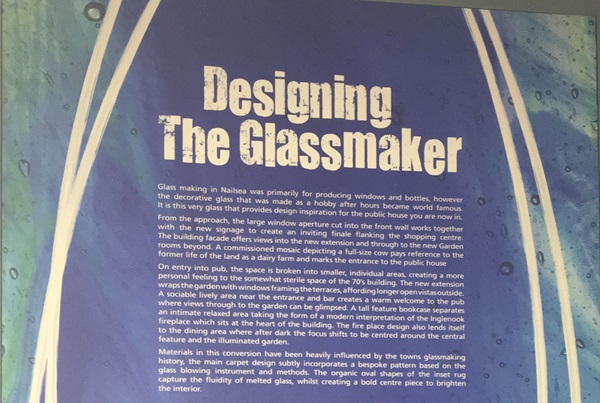
The text reads: Glass making in Nailsea was primarily for producing windows and bottles, however the decorative glass that was made as a hobby after hours became world famous. It is this very glass that provides design inspiration for the public house you are now in.
From the approach, the large window aperture cut into the front wall works together with the new signage to create an inviting finale flanking the shopping centre. The building faced offers views into the new extension and through to the new garden rooms and beyond. A commissioned mosaic depicting a full size cow pays reference to the former life of the land as a dairy farm, and marks the entrance to the public house.
On entry into the pub, the space is broken into smaller, individual areas, creating a more personal feeling to the somewhat sterile space of the 70s building. The new extension wraps the garden with windows framing the terraces, affording longer open vistas outside. A sociable lively area near the entrance and bar creates a warm welcome to the pub where views through to the garden can be glimpsed. A tall feature bookcase separates an intimate relaxed area taking the form of a modern interpretation of the Inglenook fireplace which sits at the heart of the building. The fireplace design also lends itself to the dining area where after dark the focus shifts to be centred around the central feature and the illuminated garden.
Materials in this conversion have been heavily influenced by the town’s glass making history, the main carpet design subtly incorporates a bespoke pattern based on the glass blowing instruments and methods. The organic oval shapes of the inset rug capture the fluidity of melted glass, whilst creating a bold centre piece to brighten the interior.
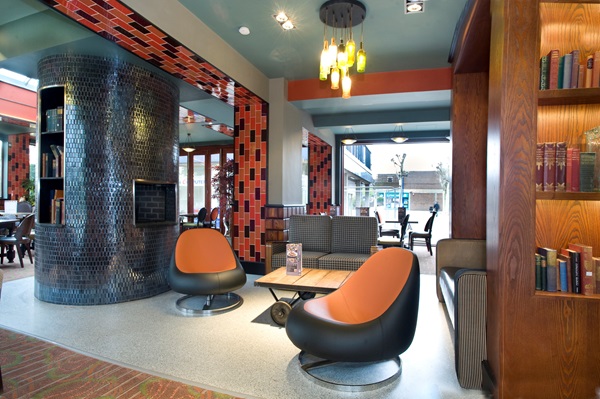
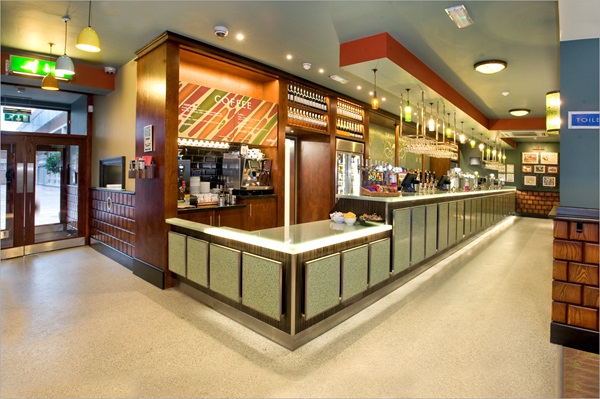
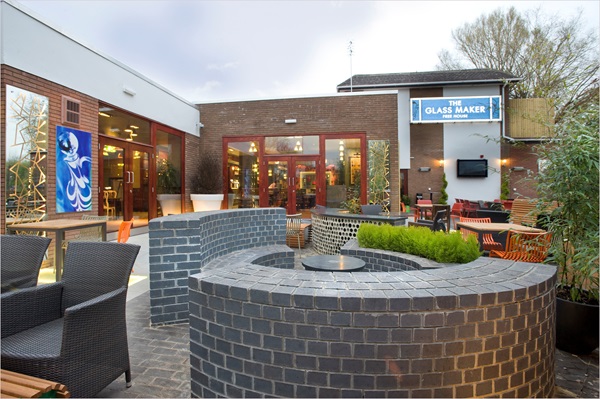
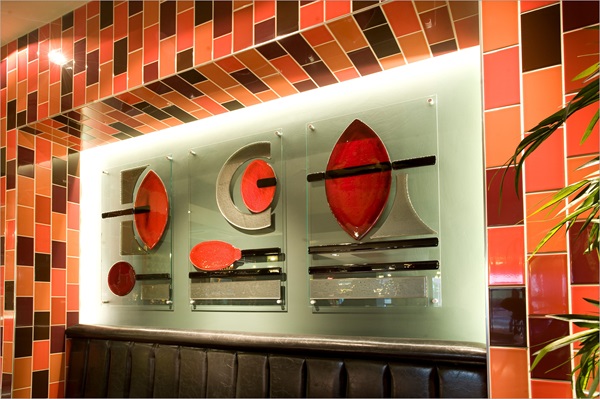
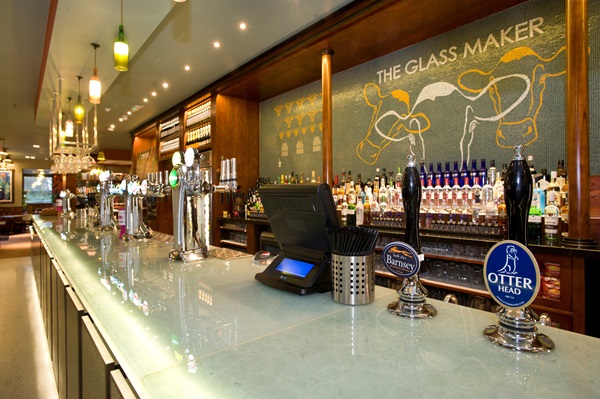
Text about designing The Glassmaker.
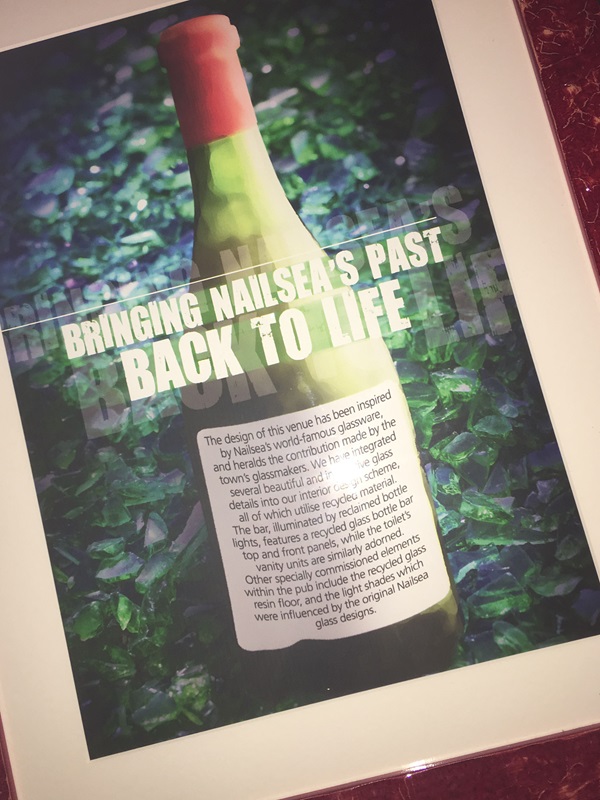
The text reads: The design of this venue has been inspired by Nailsea’s world famous glassware, and heralds the contribution made by the town’s glass makers. We have integrated several beautiful glass details into our interior design scheme, all of which utilise recycled material. The bar, illuminated by reclaimed bottle lights, features a recycled glass bottle bar top and front panels, while the toilet’s vanity units are similarly adorned. Other specially commissioned elements within the pub include the recycled glass resin floor, and the light shades which were influenced by the original Nailsea glass designs.
Text about the history of The Glassmaker.
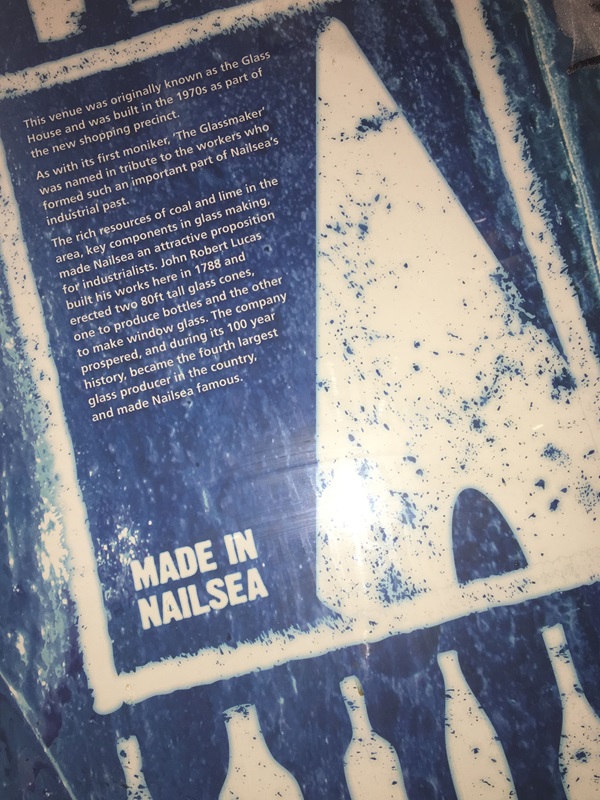
The text reads: This venue was originally known as the Glass House and was built in the 1970s as part of the new shopping precinct.
As with its first moniker, The Glassmaker was named in tribute to the workers who formed such an important part of Nailsea’s industrial past.
The rich resources of coal and lime in the area, key components in glass making, made Nailsea an attractive proposition for industrialists. John Robert Lucas built his works here in 1788 and erected two 80ft tall glass cones, one to produce bottles and the other to make window glass. The company prospered, and during its 100 year history, became the fourth largest glass producer in the country, and made Nailsea famous.
Text about Redvers Coate.
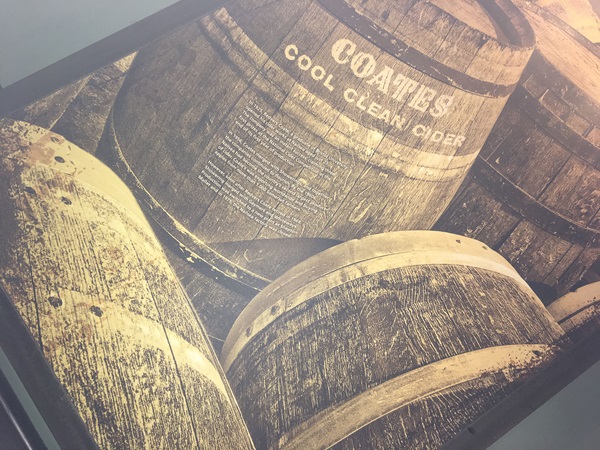
The text reads: In 1925, Redvers Coate, a graduate of Bristol University opened his cider works at Nailsea aged just 23. The company was an instant success, claiming three first prizes at the National Cider Competition at the end of its first year of production.
In 1956, Coates merged with Showerings, and together the companies continued to flourish. By the 1960s, Nailsea had become the country’s second largest producer of cider. Coates’ was exporting worldwide and buying apples from more than 1,000 Somerset farmers.
However, soon after Redvers Coate retired in 1969, Showerings merged with Gaymers and Whiteways. Production was switched to a new plant at Shepton Mallet, and in 1975 the Nailsea factory was closed.
Text about William Gibbs.
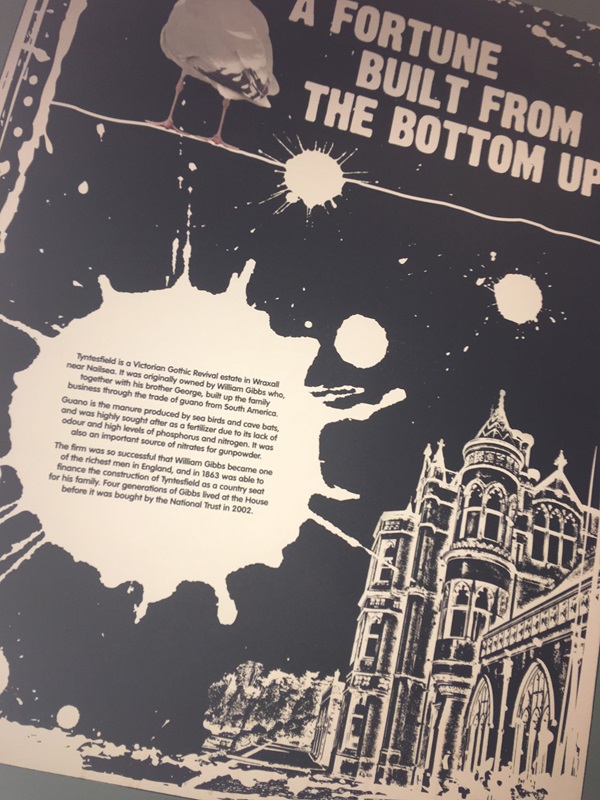
The text reads: Tyntesfield is a Victorian Gothic revival estate in Wraxall near Nailsea. It was originally owned by William Gibbs who, together with his brother George, built up the family business through the trade of guano from South America.
Guano is the manure produced by sea birds and cave bats, and was highly sought after as a fertilizer due to its lack of odour and high levels of phosphorous and nitrogen. It was also an important source of nitrates for gunpowder.
The firm was so successful that William Gibbs became one of the richest men in England, and in 1863 was able to finance the construction of Tyntesfield as a country seat for his family. Four generations of Gibbs lived at the house before it was bought by the National Trust in 2002.
External photograph of the building – main entrance.
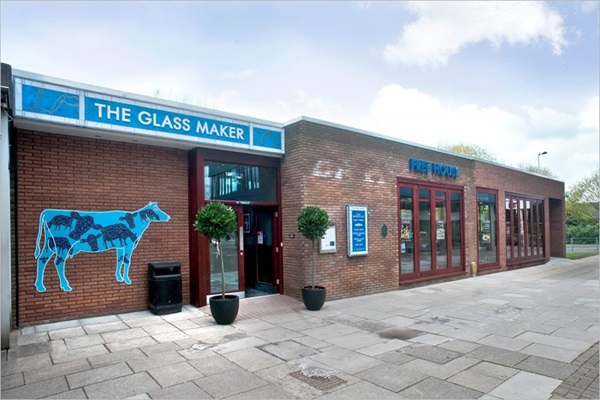
If you have information on the history of this pub, then we’d like you to share it with us. Please e-mail all information to: pubhistories@jdwetherspoon.co.uk